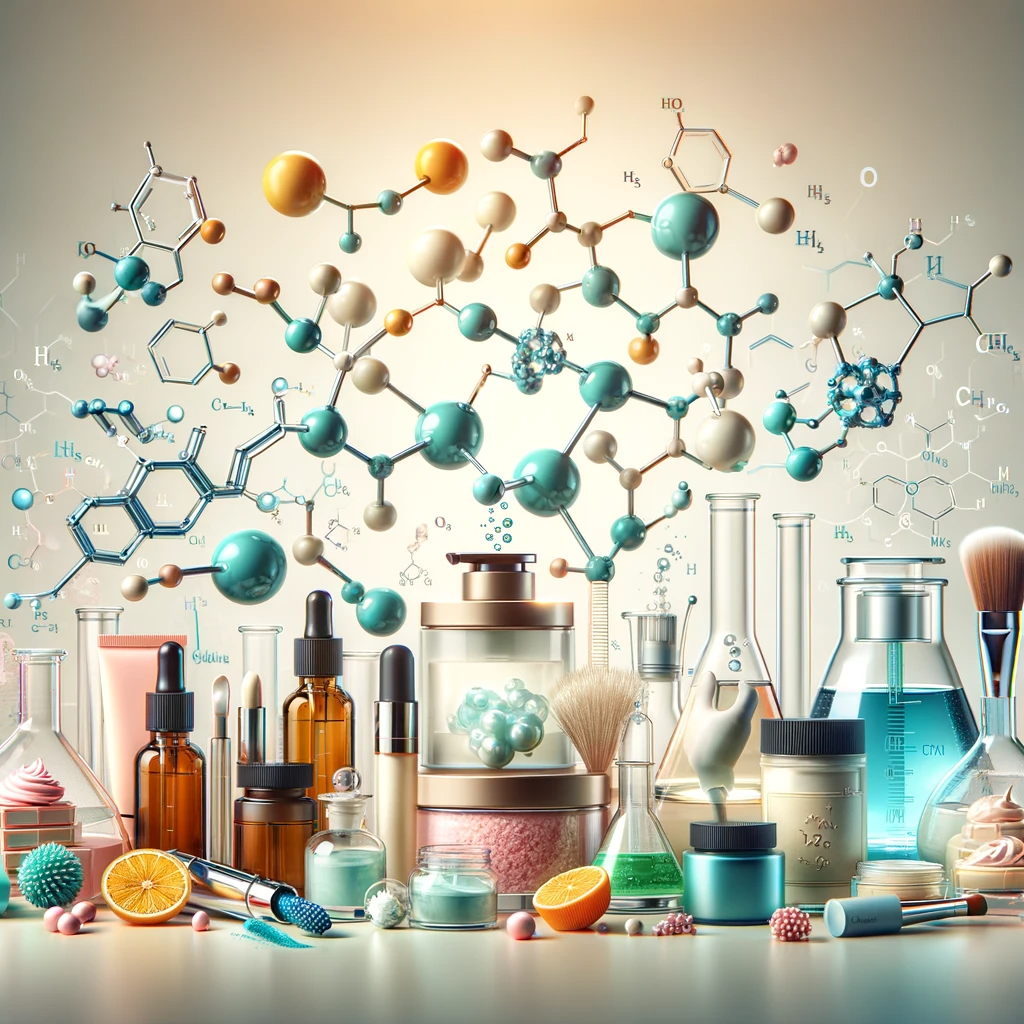Introduction

Cosmetic products have been an integral part of our daily lives for centuries, helping us enhance our beauty and skincare routines. From moisturizers and serums to lipsticks and eyeshadows, the world of cosmetics is vast and diverse. Have you ever wondered what goes into these products and how they work their magic on our skin and appearance? In this article, we will delve into the chemistry behind cosmetic ingredients, shedding light on the chemistry that powers the beauty industry and its impact on skincare and beauty products.
Understanding Cosmetic Ingredients
To comprehend the chemistry behind cosmetic ingredients, we first need to understand the various components that make up these products. Cosmetic ingredients can be broadly categorized into four main types:
- Emollients: These are responsible for providing a smooth and soft texture to the skin. Common emollients include oils, butter, and fatty acids. They work by forming a protective barrier on the skin’s surface, preventing moisture loss and keeping your skin hydrated.
- Humectants: Humectants are substances that attract and retain moisture from the surrounding environment. Glycerin, hyaluronic acid, and propylene glycol are some common humectants found in cosmetics. They help in maintaining skin hydration, resulting in a plump and youthful appearance.
- Surfactants: Surfactants are essential for cleansing products such as shampoos, soaps, and face washes. They work by reducing the surface tension of water, allowing it to interact with oils and dirt on your skin or hair, effectively removing impurities.
- Active Ingredients: These are the star players in skincare and beauty products, as they address specific concerns or provide desired effects. Active ingredients include retinol, peptides, antioxidants, and sunscreen agents. Their effectiveness relies on precise chemical formulations and interactions with the skin.
Chemistry at Work
Now that we have a basic understanding of cosmetic ingredients, let’s explore how chemistry plays a pivotal role in their functionality:
- pH Levels: The pH level of a cosmetic product can significantly impact its effectiveness. Skin has a slightly acidic pH, and cosmetic products often aim to maintain this balance. For instance, a cleanser with a pH too high can disrupt the skin’s protective barrier, leading to dryness and irritation.
- Chemical Reactions: Many cosmetic ingredients undergo chemical reactions when applied to the skin. For example, antioxidants neutralize free radicals, preventing premature aging. Understanding these reactions allows formulators to create products with targeted effects.
- Stability and Preservation: Cosmetic chemists must ensure the stability of products over time. They achieve this by using preservatives and antioxidants to prevent spoilage and maintain product efficacy.
- Compatibility: Cosmetic ingredients must be compatible with each other to create a harmonious product. Incompatibility can lead to product separation, texture issues, or reduced effectiveness.
- Skin Penetration: The size and structure of cosmetic molecules determine their ability to penetrate the skin’s layers. Some ingredients, like hyaluronic acid, can deeply hydrate, while others, like retinol, penetrate to address deeper skin concerns.
Conclusion
The chemistry behind cosmetic ingredients is a fascinating world of science and innovation. As consumers, understanding the science behind these products empowers us to make informed choices and select the best products for our skincare and beauty needs. The careful selection and formulation of cosmetic ingredients, considering their chemical properties and interactions, are what makes our favorite skincare and beauty products work wonders on our skin and enhance our natural beauty. So, the next time you reach for your favorite cosmetic product, remember that there’s a world of chemistry working behind the scenes to make you look and feel your best.